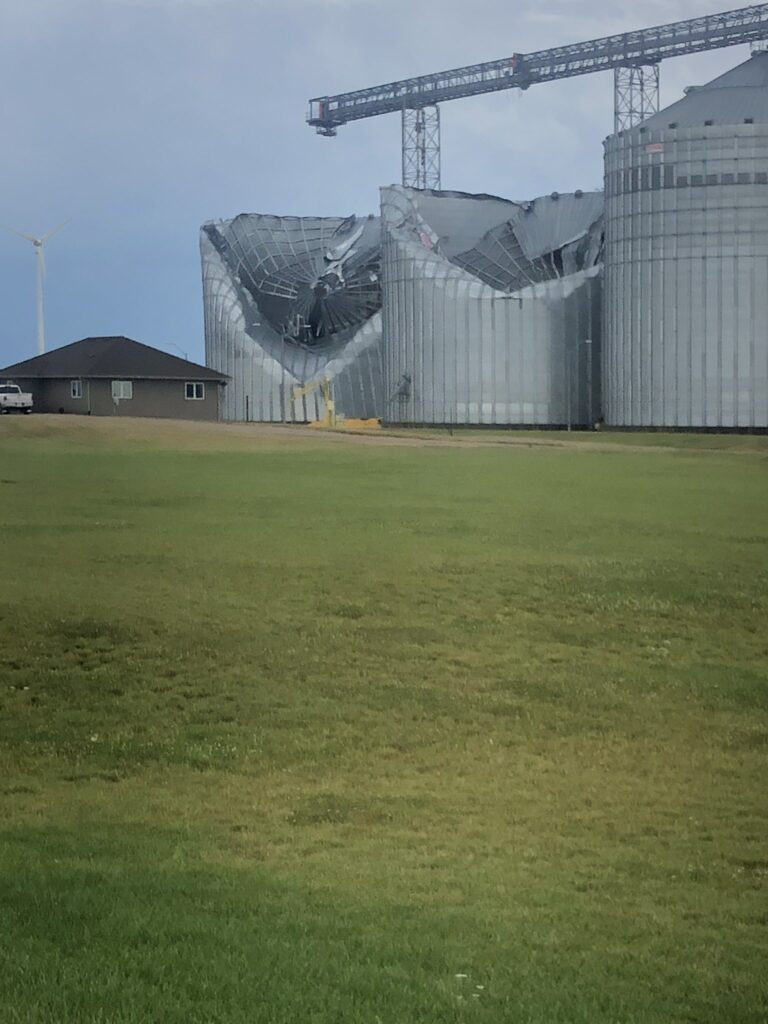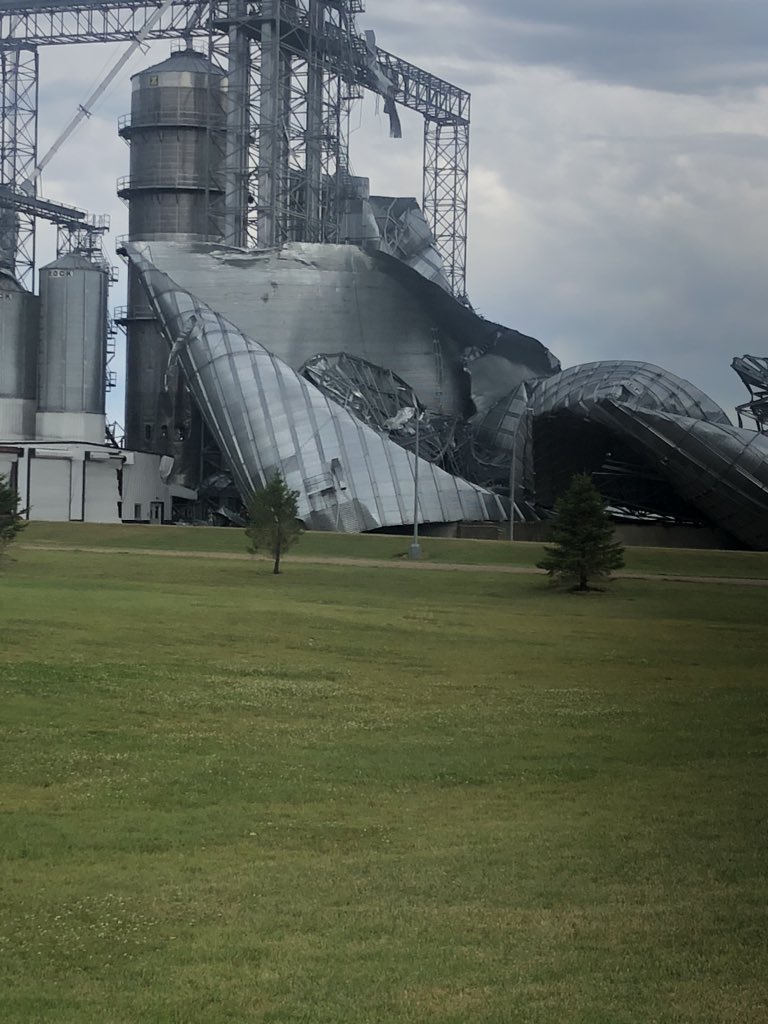While many continue to address immediate needs around the home and farmstead after the derecho, others are turning their eyes towards their crops.
In a nutshell,
- Soybeans and forages will bounce back with little or no loss.
- For corn, be sure to contact your crop insurance provider.
- Corn snapped off or pinched and wilting below the ear is lost unless it can be retrieved as green chop or silage.
- Corn snapped off above the ear, corn with severe loss of leaf area due to leaf tissue being stripped off by the wind, or corn that is severely root-lodged and laying at an angle less than 45 degrees from the soil surface should continue to try to fill grain, but limitations on the ability to take in water and/or plant nutrients and/or the ability to conduct photosynthesis will limit grain fill, resulting in smaller kernels and perhaps lighter test weights. Some plants may die early as they cannibalize themselves trying to fill grain.
- Plants that are only slightly root-lodged or leaning at greater than a 45 degree angle from the soil surface should have minimal yield reduction.
- At this stage of plant development, lodged corn will do very little, if any, up righting, so plan that what you see now will be what you see at harvest except for the plant color.
- When planning for harvest, remember that
- Corn ears that are close to the ground will have an increased likelihood of ear rots.
- Damaged (including cannibalized) stalks will likely be weaker, increasing harvest losses.
- Tangled stalks will be whipped around more, increasing harvest losses as ears are thrown away from the combine.
- If reels and/or snout cones are going to be added to the corn head, get then lined up now.
- Harvest will be slow and frustrating, so plan to start harvest ASAP, take it slow, and take frequent breaks; no crop is worth serious injury or death. Starting early will also mean that
- stalk integrity will be better, so harvest losses will be less.
- stalk integrity will be better, so harvest losses will be less.
- It does not take much prevented harvest loss to pay for moisture discounts or drying costs that are incurred.
- You will be better able to finish harvest somewhat timely.
- There are two schools of thought on where to start harvest.
- Starting with the most severely damaged fields will mean that the fields that are most likely to have significant harvest losses or grain quality issues will be harvested when stalk and ear shank integrity are at their best and ear molds will have had less opportunity to cause damage. However, better quality grain will have more time to deteriorate.
- Starting with the least damaged fields will better preserve the quality of the best grain, which may benefit marketability of that grain, but it will also allow the most damaged acres to deteriorate more prior to harvest.
- Consider the quality of the grain and if it will go to a general market, ethanol plant, or livestock feed.
RESOURCES
Meetings to discuss corn-related issues for the remainder of 2020 are being scheduled. Watch https://www.extension.iastate.edu/Pages/eccrops/meet.html for opportunities in eastern Iowa.
We are in the process of assembling resources that will be helpful from a crops, livestock, buildings, and machinery standpoint. Resources have begun showing up at https://crops.extension.iastate.edu/storm-damage-resources.
Also, some federal assistance may be available. See:



